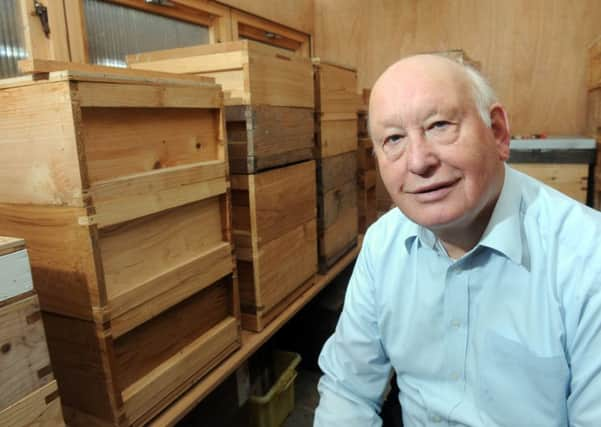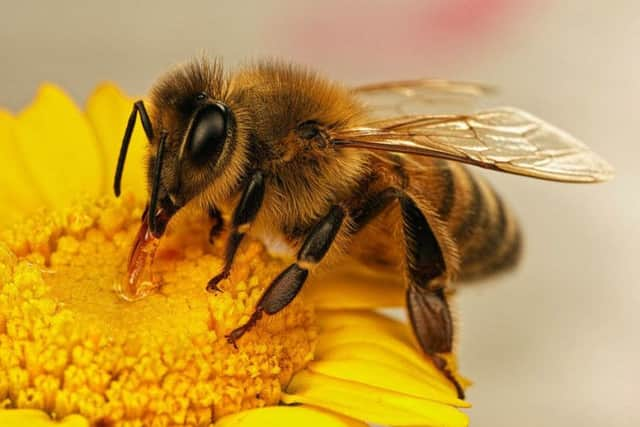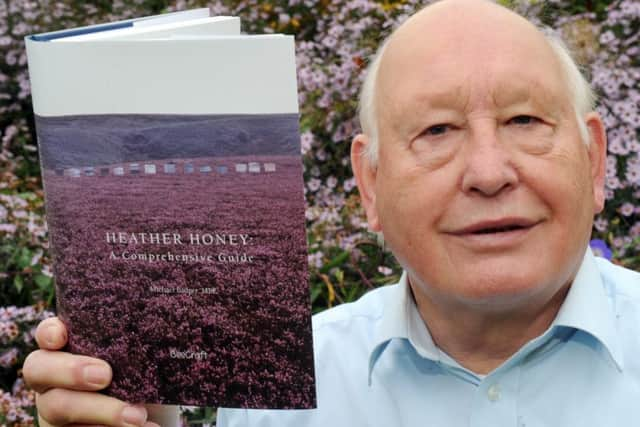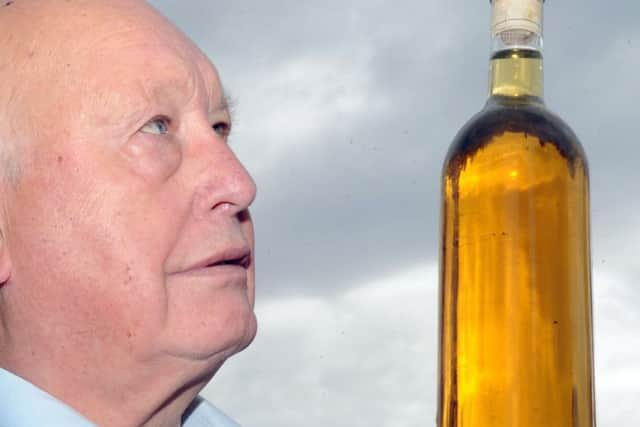Why Yorkshire's heather honey is the bees knees and beats manuku honey hands down - so says Leeds bee expert Michael Badger


Heather Honey: A Comprehensive Guide is one of those books, which, if (as Plato puts it in Timeaus) ‘the periodic scourge of the deluge’ ever descended and destroyed our way of life, the survivors of said catastrophe would no doubt laud as some kind of lost relic of high knowledge.
It might not be the kind of book you would consider buying on a whim, and at £30 (soft back) it’s certainly a commitment but the book, penned over 19 years by Michael Badger MBE more than lives up to its title.
Advertisement
Hide AdAdvertisement
Hide AdMoreover, there are even one or two controversial moments in the 374-page tome, like his claim that mānuka honey has no greater health benefits than ordinary honeys.


Mr Badger is one of the country’s foremost bee experts. He is an honorary member of both Yorkshire Bee Keeping Association and its British equivalent; he is chairman of Bee Craft Limited, the monthly journal for beekeepers’.
When I meet him at his home in Roundhay he is more than happy to show me around his extensive garden and the unique purpose built ‘bee house’ made to house his numerous hives of bees.
It’s these hives which he sometimes transports onto the North Yorkshire heather moors in late summer, at a time when most bees are going into hibernation for the winter, in order to harvest heather honey, which he claims has just as much potency as its mānuka cousin it tastes better, costs less and is British through and through.
Advertisement
Hide AdAdvertisement
Hide Ad“Heather honey is unique, produced at the end of the year when most bee colonies are shutting down, so you have to coax the bees back into life to get them to collect this epicurean honey,” he explains. “So you have to re-wake them, you do that by introducing an expanding new colony headed-up by a young queen. Then you transport them to the heather moors and leave them for about three weeks to collect this gelatinous amber-golden honey. The result is a honey which is very distinct and has a nice floral character.”


Mr Badger’s appreciation of bees derives from his late great uncles and his father, Jack, who died in 2000 aged 90. A former Royal Dragoon cavalry trooper, he ended serving with the Royal Army Veterinary Corps during the Second World War finding themselves in a war-theatre dealing with severely injured mules and horses without resort to antibiotics, which forced them to improvise, by looking to nature.
“Honey is very good for people who are seriously ill, it’s very digestible food. When a person takes in honey the body takes it straight into the bloodstream, because it’s pre-digested. Honey is used to treat certain wounds due to its antimicrobial properties of a glucose-oxidase system forming a barrier against germs but at the same time allows oxygen to pass through. Being mentored by my schoolmaster Charles Bell and great uncles my father used to tell me that heather-going is a dying art. He told me to make sure people knew about its production methods. That’s why I’ve written the book, to make sure the knowledge is passed on.”
Fascinated with beekeeping since the age of seven he became involved with the National Honey Show in 1972, Michael qualified as BBKA senior honey judge in 1984. He was honey steward at the Great Yorkshire Show for 44 years, 31 years as the Chief Honey Steward until last year. Subsequently he was President of the British Beekeepers’ Association in 2000 and chairman of the Yorkshire BKA in 1983 and 2000. In 2003 he was made an MBE for his services to beekeeping at the national scene.


Advertisement
Hide AdAdvertisement
Hide AdMr Badger, a father of three (he has two grandchildren), married to Hilary, whom he met when he came to Leeds from Northern Ireland in 1972. Leeds is his now adopted home. He notes: “I love Leeds, its ideal for bees.”
Going back to the subject in hand, he explains there are two types of heather honey - ling and bell heather, the latter flowering in mid-June and being very similar to ordinary honey but lacking ‘thixotropic qualities’ of the ling. Ling is unique in that the thixotropic qualities give the honey a gel like consistency (due to the presence of special colloids and proteins) that when the honey is stirred vigorously its physical state turns to a liquid format that after a few days returns to its gel-like consistency. Mr Badger maintains that the experts will tell you that honeys share the same medicinal qualities which have been so much associated with mānuka honey but says heather honey remains much easier on the palate.
That’s why he’s keen to see heather moors maintained, even if that does mean promoting grouse shooting.
“The moors came about in Palaeolithic times when ancient man used to burn the grass so new grasses grew and they could hunt animals who came to feed on it but after 9,000 years of annual burning, it became like the Kansas Dust Bowl, nothing would grow, but it was perfect for heather. The heather moorlands of Britain cover about 25 per cent of uplands (15,000sq km), with about half of that managed for driven grouse shooting.


Advertisement
Hide AdAdvertisement
Hide Ad“People understandably get very sentimental about grouse shooting but if the heather dies out, you would end up with bracken, then trees and it would go back to forest and the heather moors would die out, along with the whole man-made habitat cherished by so many in early August.
“I do not hunt, don’t shoot and don’t fish but if you want to see the heather moors in all their glory, then they have to be maintained - in the majority, it’s landowners who manage it for all. We’re probably the only country in the world where grouse shooting it takes place; it is regarded as unique to Great Britain due to the superb skill required to shoot a flying bird that travels at 140 mph.”
Heather Honey: A Comprehesive Guide, published by BeeCraft Ltd, available online.
FACT
In 1986, Mr Badger and Robin Tomlinson were instrumental in finding a home for Leeds Beekeepers’ Association at Temple Newsam.
Advertisement
Hide AdAdvertisement
Hide Ad“There was nowhere at a meeting to huddle into to talk bees when it rained. Beekeepers like to have a chat and drink cups of tea, so I convinced the council to let us have facilities at Temple Newsam. They took us in and they have been a great inspiration to do their bit for the environment. I get a lot of pleasure knowing members have built on our early work and taken it forward to greater heights.”